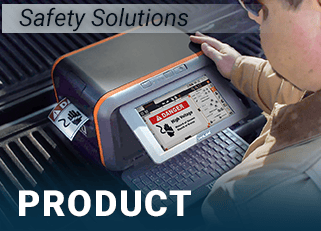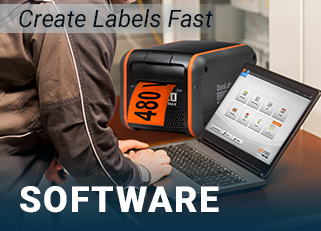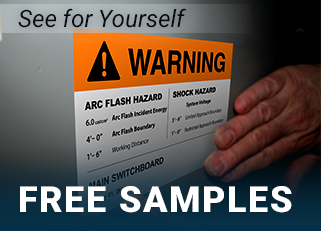Polychlorinated Biphenyls (PCBs)
03
February,
2023
5 MINUTE READ
What Are Polychlorinated Biphenyls (PCBs)?
Think of yourself as a lab rat. Chemicals synthesized in a laboratory before you were even born are now administered to you via the air you breathe, water you drink, food you eat, and even the weather. They might be in a light fixture above you right now, gradually misting toxins onto you.
Unfortunately, all of this is really happening. The toxin is PCB, or polychlorinated biphenyl.
What Are PCBs, and Where Are They Found?
PCBs are a man-made chemical used in many industrial and commercial applications such as hydraulic and electrical equipment as well as paint, plastic and rubber products, and mechanical lubricants. One of the most common trade name is Aroclor, but there are many other PCB trade names. PCBs are toxic and they may be around you in your workplace and in the equipment you work with.
PCBs were manufactured over a 50-year period in the United States. During this time the manufacturing process released it into the atmosphere, into the air and water supply, leeching it into the soil. Soon, birds, fish and other animals came into contact with it, transporting it further and gaining a host of health issues, such as cancer and reproductive failure.
When PCBs were introduced, they were an innovative and exceptionally useful chemical in a variety of industries. It was one of the first flame-retardant chemicals and has a high flash point and high thermal conductivity. Some types of transformers could only be constructed with the use of PCBs.
Symptoms of PCB Exposure
In the 1930s, symptoms started emerging in workers in the form of painful black bubbling of the skin, sometimes resulting in liver failure without a known cause. Chemicals were unregulated and unsafe work conditions were the norm. Laws were not typically designed to protect the worker, and industry often won out over safety. Stricken workers were typically poor and didn't have money for treatment or investigation beyond the evident symptoms, if that.
PCB-Related Health Issues
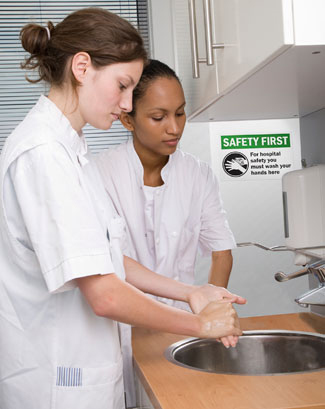
In 1976, the Toxic Substances Control Act was passed, which authorized EPA to control substances it determined were unreasonably risky to public health. EPA evaluated studies and concluded that PCBs cause cancer, suppress the immune system, cause learning deficits, and a host of other serious health issues. PCBs were finally banned in 1979.
After the 1979 ban, items that contained PCB that were disposed of improperly may have resulted in leaks. When these items are crushed, toxins are released into the soil and eventually the water supply. When burned, the toxins make their way into the air. PCBs contaminate rain and snowfall and travel great distances through rivers. PCBs accumulate in food crops and animals consumed by humans. Whether you work around PCBs or not, you may have been contaminated.
PCB-related health issues, though potentially serious for those working around items containing PCBs, worsen when this toxin is released into the environment. The composition of PCB mixtures alters when it binds with soil or accumulates in animals. People who ingest fish that have been contaminated with it, or even come into contact with contaminated soil are in a higher risk group.
Though PCBs were banned more than three decades ago, this toxin is slow to degrade and we are still at risk.
Who Has the Greatest Risk of PCB Exposure?
Consumption of marine mammals, fish, or wildlife increases one's risk. A 39-mile river stretch in Green Bay, WI for instance is estimated to contain over 51,000 pounds of PCBs. EPA declared the fish and waterfowl as contaminated, and anyone eating them may suffer adverse health effects. But the waterfowl is not contained, nor are the toxins.
There is also a risk to workers that service pre-1979 electrical equipment or handle other equipment that is known to contain PCBs. Even working in a building with such equipment can be risky, and you may not know you're around it. Centers for Disease Control found increased death counts from brain cancer and melanoma in some plants where workers were exposed to PCBs.
PCBs were also used in caulk, with concentrations up to 30%. EPA believes that buildings constructed between 1950-1979 are at high risk of containing PCB-contaminated caulk. Its testing shows public buildings (including schools) and apartment complexes to be at risk although single-family houses are likely to have safe levels.
What Can Be Done to Minimize Risk?
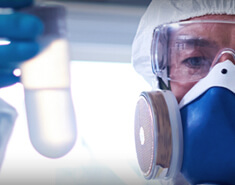
Mercury, lead, DDT, arsenic, asbestos, PCBs... Life has become a chemical dodge, and it's a personal war to prevent stealth toxins from slowly stealing years from our lives. We can't fix the mistakes of the past, but we can minimize the hazards with these steps:
- When prepping fish, remove organs, skin, and fat, which is where PCBs are stored. Fish fat can be found in the belly, back, and dark meat along the side. Avoid frying or cooking into soup as this retains fat. Do not consume juices which collect during cooking. Do not eat soft green parts of crab or lobster. Fish that are the highest-risk to eat are those that eat other fish.
- When choosing meat or dairy, opt for low-fat organic options. Trim fat from meat prior to cooking and avoid frying. Do not consume juices which collect during cooking.
- Don't use treated or painted wood for fires nor burn any substances that could contain PCBs.
- Contractors working on public buildings constructed between 1950-1979 should test caulk prior to removal. If it tests positive, ensure toxins do not get released into the air by leaving it in place and following decontamination procedures.
What Do I Need to Know About Labeling PCBs?
All equipment that is known to contain PCBs must be marked. Approved PCB labels are outlined in 40 CFR Part 761.45. For any items that are large enough to accommodate a 6" x 6" label, a large mark (ML) label is required. Smaller items may utilize the Small Mark (MS) label, which can be created in a variety of sizes from 0.4" x 0.8" to 1" x 2". You can better understand what to expect by getting informed on PCB label examples and specifications.
Polychlorinated Biphenyls Disposal
Methods have been found to contain and neutralize PCBs. Numerous companies throughout the United States have been approved under the Toxic Substances Control Act to accept and/or dispose of the necessary waste included in the EPA-approved polychlorinated biphenyl (PCB) disposal facilities list. These facilities are designed to treat everything from fluorescent lights to transformers; they include chemical waste landfills, scrap metal recovery ovens, and chemical dechlorination.
Labeling Fluorescent Light Ballasts
Fluorescent light ballasts are at high risk for PCBs and in some cases, require labeling. Manifesting and labeling ARE required for performance-based disposal, per 40 CFR 761.62(a). They ARE NOT required for disposal in solid waste landfills, per 40 CFR 761.62(b). They MAY be required for risk-based disposal, which requires written application to the EPA region where storage shall take place, per 40 CFR 761.62(c). Review the various disposal types in 40 CFR 761.62.
Even when labeling is not required, records or optional labeling must show that the waste is less than one year old. In other words, they cannot simply be stored indefinitely without being appropriately assessed.
If the ballast was manufactured after July 2, 1979, regulations do not require you to label it as PCB-free. Labeling may be helpful for internal purposes so that the item is known to not require testing or PCB disposal.
If you don't know whether your ballasts contain PCBs, check the manufacturer and type to find out whether they were commonly made with PCBs. If you are unable to determine, you must assume that it does and use an approved PCB disposal process. It is crucial to understand the materials you may encounter in the workplace and have the appropriate signs and labels on materials. Ensure your workplace is compliant with all safety signage with the help of DuraLabel industrial printers and supplies. Our free HazCom guide is a critical tool to improve safety around hazardous chemicals and to meet OSHA requirements. Download it below.
RELATED RESOURCES

Tools for 5S Lean Manufacturing
The5S Systemis a lean manufacturing tool that helps to clean and organize the workplace, as well as improve ...
Read
Getting Started with 5S Labeling and Marking
Staying on top of operational efficiency is an ongoing challenge. The lean 5S methodology is a powerful ...
Read
Lean Manufacturing Efficiency
Improving manufacturing efficiency requires eliminating waste. What is waste? Anything that is not adding ...
Read.png)
